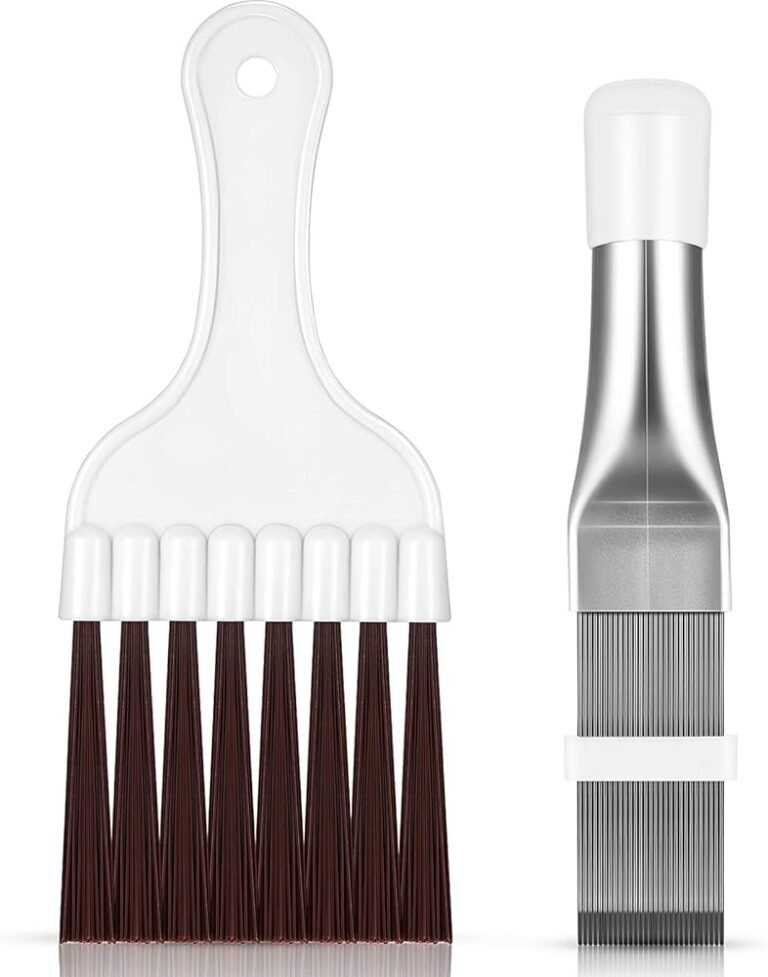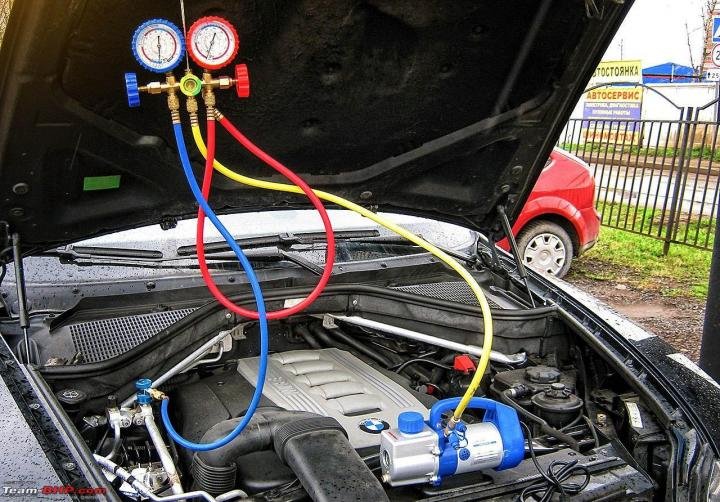Ac Compressor Shaft Seal Leak Symptoms: 7 Red Flags You Shouldn’t Ignore
AC compressor shaft seal leak symptoms include poor cooling performance and unusual noises coming from the AC unit. A faulty shaft seal can lead to refrigerant leaks and cause decreased efficiency in cooling.
Additionally, the AC system may emit a foul smell, indicating a refrigerant leak. It is important to address these issues promptly to prevent further damage to the AC compressor and ensure optimal cooling performance.
Red Flag 1: Decreased Cooling Efficiency
When an AC compressor shaft seal starts to leak, it can lead to various symptoms that indicate a problem with the cooling system. One of the red flags that may appear is decreased cooling efficiency. This can be observed through reduced airflow from the vents, as the seal leak affects the compressor’s ability to maintain the optimal air pressure. As a result, the cooling performance of the AC system may become uneven, with certain areas of the space being cooler than others. In addition, inadequate temperature control may occur, causing discomfort and inconvenience.
Red Flag 2: Strange Noises And Vibrations
Unusual humming or buzzing sounds and excessive compressor vibrations are clear indicators of a potential AC compressor shaft seal leak. These symptoms can be attributed to a variety of underlying issues, such as worn-out bearings or a damaged shaft seal. Detecting these signs early is crucial to prevent further damage to the AC system and ensure optimal performance. If you notice any strange noises coming from your AC unit, such as the mentioned humming or buzzing sounds, it’s essential to have it inspected and repaired by a professional technician. Addressing the issue promptly can save you from costly repairs down the line and help maintain a comfortable indoor environment. Regular maintenance and periodic checkups can help detect and prevent common AC compressor leaks and ensure the longevity of your system. So, be attentive to any new noises or vibrations!
Red Flag 3: Refrigerant Leaks
A refrigerant leak can be a cause for concern in your AC system, and there are a few symptoms that can help you identify if your compressor shaft seal is leaking. One red flag is a strong refrigerant smell coming from your AC unit. If you notice a pungent odor, it could indicate a leak. Another symptom is the accumulation of frost on the compressor. This frost buildup is caused by the leaking refrigerant, which can result in decreased cooling efficiency. Identifying these signs early on can help prevent further damage to your AC system and ensure it is running at its optimal performance.
Red Flag 4: Oil Stains And Spills
One of the telltale signs of an AC compressor shaft seal leak is the presence of oily residue around the compressor. This can often be noticed as oil spots on the ground near the unit. The presence of these oil stains and spills is a red flag that indicates a potential problem with the compressor shaft seal.
If you observe any signs of oil leakage around your AC compressor, it is important to address the issue promptly. Ignoring such leaks can lead to further damage to the compressor and may result in the need for expensive repairs or even a complete replacement of the unit.
Regular maintenance and inspections can help identify and resolve potential issues with the AC compressor shaft seal before they escalate. If you notice any oil stains or spots near your AC unit, it is recommended to consult a professional HVAC technician to diagnose and fix the problem.
Red Flag 5: Increased Energy Bills
Increased energy bills are a strong indication of a potential AC compressor shaft seal leak. This leak can lead to inefficient performance, causing the system to work harder and consume more energy, ultimately resulting in higher costs. When the AC compressor shaft seal is compromised, the refrigerant can escape, forcing the compressor to work overtime to maintain the desired temperature.
This increased workload puts unnecessary strain on the system, leading to higher energy consumption. Over time, this extra energy usage can significantly impact your monthly utility bills. If you notice a sudden spike in your energy bills without any apparent cause, it is crucial to have your AC system inspected for a possible compressor shaft seal leak.
Addressing this issue promptly can help prevent further damage to the compressor and restore the system’s efficiency, ultimately reducing your energy costs. Don’t ignore the red flag of increased energy bills and take action to resolve the AC compressor shaft seal leak to maintain optimal performance and save on energy expenses.
Red Flag 6: System Cycling On And Off Frequently
Red Flag 6: System Cycling On and Off Frequently
Frequent short cycles and constant switching between on and off modes may indicate a problem with the AC compressor shaft seal. The shaft seal is responsible for keeping the refrigerant inside the compressor and preventing any leaks. If the seal is damaged or worn out, it can lead to refrigerant leakage, causing the system to cycle on and off more frequently.
This frequent cycling not only puts additional strain on the AC compressor but also affects the cooling efficiency of the system. The compressor has to work harder to maintain the desired temperature, leading to increased wear and tear. In addition, frequent short cycles can also result in higher energy consumption and higher utility bills.
If you notice your AC system cycling on and off more frequently than usual, it is important to have it inspected by a professional technician. They can diagnose the issue and determine whether the compressor shaft seal needs to be repaired or replaced.
Red Flag 7: Compressor Failure
Red Flag 7: Compressor Failure is a critical issue that can occur in an AC system. When the compressor breaks down completely, it can lead to a loss of cooling functionality in the air conditioning unit. This is a serious problem that requires immediate attention and repair. A compressor failure can be caused by various factors, such as a shaft seal leak. A shaft seal leak occurs when the seal that prevents refrigerant from leaking out of the compressor fails. This can result in a significant loss of refrigerant, reducing the cooling capacity of the AC system. It is important to pay attention to any signs of compressor failure, such as reduced cooling performance, strange noises, or visible refrigerant leaks. If you notice any of these symptoms, it is recommended to contact a professional technician to diagnose and repair the issue promptly.

Credit: www.momscleanairforce.org
Frequently Asked Questions Of Ac Compressor Shaft Seal Leak Symptoms
What Are The Symptoms Of An Ac Compressor Shaft Seal Leak?
If you notice strange noises coming from the AC system, reduced cooling performance, or refrigerant leaks around the compressor, it could indicate an AC compressor shaft seal leak. These symptoms require immediate attention to prevent further damage.
How Does An Ac Compressor Shaft Seal Leak Occur?
AC compressor shaft seal leaks can occur due to age, wear and tear, or incorrect installation. Harsh weather conditions, debris, and contaminants can also contribute to the weakening of the seal, leading to leaks.
Can I Drive With An Ac Compressor Shaft Seal Leak?
It is not advisable to drive with an AC compressor shaft seal leak. Continuing to operate the AC system with a leak can result in compressor failure, additional complications, and costly repairs. It is recommended to address the issue promptly.
Conclusion
To sum up, recognizing the symptoms of an AC compressor shaft seal leak is crucial for maintaining the performance of your air conditioning system. From oil stains under the car to reduced cooling capacity, these indicators should not be ignored.
Regular maintenance and prompt repair can prevent further damage and prolong the lifespan of your AC compressor. Stay vigilant and address any potential leaks to keep your car’s air conditioning running smoothly.






